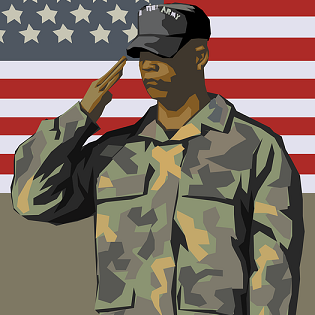Charitable Assistance
Jean Ryan started a nonprofit organization called Bridges for Heroes to help veterans and their families with the cost of health insurance, co-pays and deductibles. Does Bridges for Heroes qualify as a 501(c)(3) organization? Is this type of help considered charitable assistance?
A Little Background
The IRS states, “To be tax-exempt under section 501(c)(3) of the Internal Revenue Code, an organization must be organized and operated exclusively for exempt purposes set forth in section 501(c)(3). The first of the exempt purposes listed in section 501(c)(3) is “charitable.” While “charitable” is not the only purpose, the IRS notes that “Organizations described in section 501(c)(3) are commonly referred to as charitable organizations.”
Charitable Class
A charitable organization must benefit a charitable class. IRS Publication 3833 provides the following description of a charitable class:
“The group of individuals that may properly receive assistance from a tax-exempt charitable organization is called a ‘charitable class.’ A charitable class must be large enough or sufficiently indefinite that the community as a whole, rather than a pre-selected group of people, benefits when a charity provides assistance.”
Some examples of a charitable class, according to Zachary S. Kester, J.D. are “veterans, elderly individuals, physically or mentally handicapped, talented and/or gifted individuals, families of people killed in the line of duty, the poor, the distressed, and even other charitable organizations.” An interesting observation is that a charitable class does not have to be comprised exclusively of needy individuals. Veterans constitute a charitable class, even though not all veterans need charitable aid.
If the charitable class is a small group, such as employees of a particular company, then the group of individuals eligible for assistance must be indefinite. In other words, the charitable class must include current employees who qualify for assistance and any future employees who qualify.
Needy or Distressed
While IRS Publication 3833 is about disaster relief, it also provides insights on the broader topic of charitable assistance. In addition to being part of a charitable class, recipients of charitable assistance must also be needy or distressed. Publication 3833 states, “Individuals do not have to be totally destitute to be financially needy; they may merely lack the resources to obtain basic necessities.”
Publication 3833 further explains that while immediate assistance in the aftermath of a disaster, such as rescue services or hot meals, is appropriate regardless of financial need, longer term assistance requires evidence of need: “However, as time goes on and people are able to call upon their individual resources, it may become increasingly appropriate for charities to conduct individual financial needs assessments. For example, if a charity intends to provide three to six months of financial assistance to families to pay for basic housing because of a disaster or emergency hardship, it would be required to make an assessment of financial need before disbursing aid. While those who may not have the resources to meet basic living needs may be entitled to such assistance, those who do not need continued assistance should not use charitable resources.”
Therefore charitable assistance is appropriately given immediately post-disaster and longer term with evidence of financial need.
Two Requirements for Charitable Assistance
In summary, the IRS in Publication 3833 lays out two requirements for recipients of charitable assistance. Recipients must be:
- Part of a charitable class
- Needy or distressed.
Other Examples of Charitable Assistance
IRS Publication 3833 lists examples of aid to individuals including “food, clothing, housing (including repairs), transportation, and medical assistance (including psychological counseling).” Aid may be “in the form of funds, services, or goods.”
Another charity, The Society of Saint Vincent de Paul, gives us more examples of charitable assistance:
- Gasoline vouchers
- Rent assistance
- Utility bill assistance
- Free clothing, household goods, back to school supplies
- Free groceries
- Emergency prescription medications
Charitable assistance can take many forms.
To answer our questions…
Back to the questions that started our post – Does Bridges for Heroes qualify as a 501(c)(3) organization? Does the help that Bridges for Heroes provides to veterans for health insurance and costs of health care not covered by insurance qualify as charitable assistance? Let’s look how how they satisfy the criteria for charitable assistance:
- The organization serves veterans, which constitutes a charitable class.
- The organization requires veterans to provide evidence of need based on household income.
Bridges for Heroes satisfies both criteria for providing charitable assistance. Therefore we can conclude the organization is charitable in nature. Bridges for Heroes has also received its determination letter from the IRS as a 501(c)(3) public charity, validating its tax exempt charitable purpose.
Next week — Is this type of assistance taxable income to the veterans?
1 Comments
Leave a Comment
You must be logged in to post a comment.

Thank you ladies! Always informative!